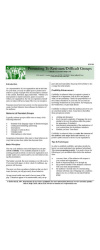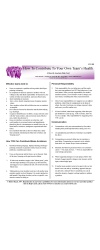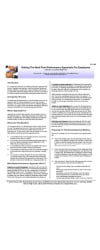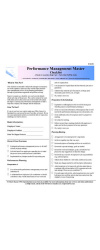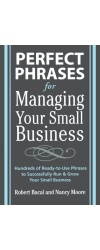Original price was: $15.95.$4.95Current price is: $4.95.
Giving feedback is something one can learn, since it doesn’t come naturally. Learn to structuve and tone your feedback to others with the tactics in this guide.
Description
You give feedback every day, even if you aren’t realizing it. Whether it’s with a spouse, your child, a co-worker, or an employee, or if you are a trainer or group and learning facilitator, it will be a rare day if you aren’t helping someone learn a task, or just learn a little about themselves.
It’s time to sharpen your feedback skills, and ability to work with someone to help them learn, formally, informally. We know from research over fifty years that feedback is THE key to learning.
Not only will you learn how to give more effective feedback in any situation or context, but the methods you’ll learn make feedback giving, less painful for you, and more useful for the recipient of the feedback.
Who’s It For?
Trainers, Group Leaders Need Feedback Skills
Most trainers and group leaders know the basics of giving feedback, but few know the information contained in this PocketBytes Edition. For example, you’ll learn about the THREE different kinds of feedback, what they are for, and how to deliver them:
Emotionally Loaded
Informationally Loaded
Task Loaded
If you don’t know what these are and how to use them, and for what purpose, your training is less effective than it can be. But there’s a lot more too. So, here’s our guarantee. If you as a trainer or facilitator do NOT learn something new, we’ll give you a refund.
Managers, Supervisors: Feedback Essential To Building Productivity
Although managers don’t think of themselves as trainers, they are often in positions where they have to provide feedback to help employees improve their capabilities. We have you covered too. Avoid the most common errors made by managers and supervisors that render feedback not only useless, but potentially damaging.
For Parents, Regular Folks (Yes you use feedback too)
Parents teach their children almost constantly. And regular folks help and teach each other every day, as they provide opinions, and well, feedback. This Pocketbytes has special sections just for you, addressing feedback giving within the process of teaching childen, the special characteristics of children and how to modify feedback to suit. Or, if you want to be more effective at providing feedback to a friend or spouse, you’ll learn from this amazing resource.
What’s In It?
The Power of Feedback
For Managers and Supervisors
For Trainers And Group Leaders
For Parents And Regular Folks
Three Kinds of Feedback
Emotionally Loaded
Examples of Positive Affective Feedback
Examples Of Negative Affective Feedback
Points To Remember About Affective Feedback Giving
Information Loaded Feedback
Two Different Contexts For Giving Informational Feedback
Feedback During Instruction
Example
Nuts And Bolts of Giving Feedback
Labels and Judging Vs. Description
Importance of Using Cooperative and Neutral Language
Confrontational Language Characteristics
Cooperative Language Characteristics
Third Feedback Type: Task Loaded – Encouraging Self Feedback
Cueing – Focusing Learner Attention
Learning To Drive Example
Tying A Neck Tie Example
Public Speaking Feedback Example
More Tips
Picking Feedback Issues
Using Second Hand Feedback Cautions
Anticipating Negative Reactions
Sharing Reponsibility For Improvement
Private Vs. Public Feedback
Proper Timing
Feedback Media: In Person? Email? Phone>
Using Feedback From Other Training Attendees
Small Group Feedback and Role Playing Issues
The Sandwich Feedback Method? Think Again
Providing Feedback To Children
As you can see, we cover feedback in all its flavors and contexts, and we do it concisely. It’s time to get your copy and become a master learning helper and feedback provider.
59 Bullet Points You Must Read About Feedback
Examples of Good and Bad Feedback

